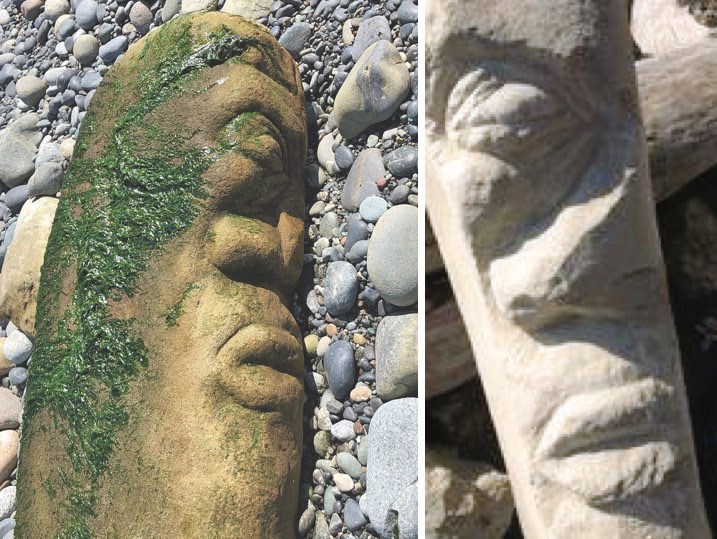The origin of a carved sandstone pillar discovered on a Dallas Road beach last summer is being 颅questioned after a local artist insisted he carved the sandstone rock in 2017.
Ray Boudreau posted a photo of a similar rock carving on the Times 91原创 Facebook page, saying it was his carving and he thought it had been stolen.
Last week, the Royal British Columbia Museum announced it had discovered an Indigenous artifact used in rituals by the Songhees and Esquimalt First Nations.
The museum said the 100-kilogram oblong pillar with a carved face on its edge had been examined by an archeology curator. After consulting with local communities and looking at anthropological records, the curator came to the conclusion the artifact was likely related to events such as the first salmon ceremony, used in puberty rites or related to ceremonies involving the feeding of the dead.
The museum said the provenance of the pillar is now under review, and that it would reach out to Boudreau with the the Songhees and 颅Esquimalt First Nations.
The pillar was found on July 12, 2020, by Victoria resident Bernhard Spalteholz while walking along the beach below Beacon Hill Park at low tide.
The pillar is a large slab of 颅sandstone, a type of rock not found in this area, and did not appear to have been carved with steel tools. The museum believed it once stood near the more extended edge of the cliff until a large landslide took it down and eventually shifted it near its recent location.
The pillar was wrestled ashore from a rising tide using a log railroad. There, it was loaded onto a dolly and wheeled across plywood planks to the stairs at the foot of Cook Street.



